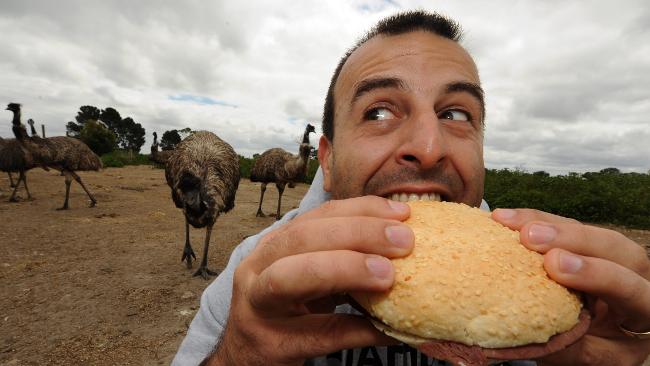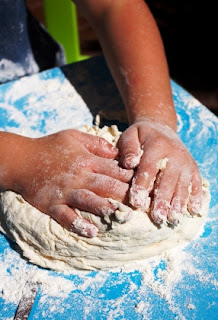Aborigines lived as Hunter-gatherers. They hunted and foraged for food from the land.
Australian
Aboriginal cooking methods are unique, most of them originating in and around outdoor fires. Boiling and barbecuing are newer techniques that they have learned.
Aboriginals ate a balanced diet before the invasion of the British Crown, including seasonal fruits, nuts, roots vegetables, wattles, other plant food, many types of meats, and seafood.
Aboriginal Cooking Methods
Roasting on hot coals:
· The basic technique for cooking flesh, including most meats, fish and small turtles.
A further slow roasting, involving covering with coals and ashes may have then
been employed to thoroughly cook the meat or to soften an otherwise tough meat.
After cooking, the meat would be quickly consumed.
· For game, such as a kangaroo, the fur would first be singed off in the flames. As
the carcase started to swell, it would be removed from the flames, gutted and the
remains of the fur scraped off with a sharp implement. By this time the fire would
be a bed of hot coals on which the carcase would be further cooked. It is unlikely
that cooking would be complete by this method, the meat would be rare but
probably relished by all, particularly the men of the group.
· Smaller game would be more thoroughly cooked by this method.
· Shellfish would be cooked briefly on the coals at the side of a fire so that, as soon as
the contents started to froth, they were removed from the heat. This method
avoided the shellfish being overcooked and tough.
Baking in the ashes
Dampers and various types of bread were baked in the ashes. Care was taken to only
use the correct type of wood from which the ashes were obtained. Some woods
imparted an unpleasant taste or even caused irritation or discomfort to the users. most
wattles seemed to have been successfully used for baking in the ashes, yielding a fine
ash that did not cause irritation. Witchetty grubs only required to be briefly rolled in
the hot ashes to cook them. Often damper or goanna would be placed on the hot
ground beneath the ashes and covered with more ash to cook. A scooped out hollow
was often made in which to cook yams and other small vegetables by then covering
them with a further layer of ash and coals.
 Steaming in a ground oven
Steaming in a ground oven
Aboriginal cooking methods using ancient ground ovens still exist, particularly in the Wiradjuri area, along the Darling,
Murrumbidgee and Lachlan Rivers. At Lake Urana in western NSW I have seen such
ovens and only recognised them after having them explained to me. The ovens were
prepared by digging out a pit about 90 cm long and 60 cm deep, taking care to collect
any clay from the digging. The clay, usually fashioned into smooth lumps, would be
placed aside until the pit had been filled with selected firewood and then placed on
top. As the wood burned, the clay would dry quickly and become very hot. These
clay lumps, nearly red hot, would be removed from the pit using sticks for tongs, the
pit swept out and quickly lined with green leaves or grass on which small game such
as possums would be lain, covered by more green grass and weighed down by the clay lumps. All this was covered with earth from the original excavation to prevent loss of
steam. This method of cooking produced excellent results. In areas such as Arnhem Land, wrapping in moist paperbark from the Melaleuca trees is still a popular method
of cooking vegetables and meat in a ground oven. Iron particles in ground ovens
became aligned according to the magnetic field of the earth at the time the ovens were
last used – from this the age of the ovens could be calculated, a bonus for
archaeologists.
























